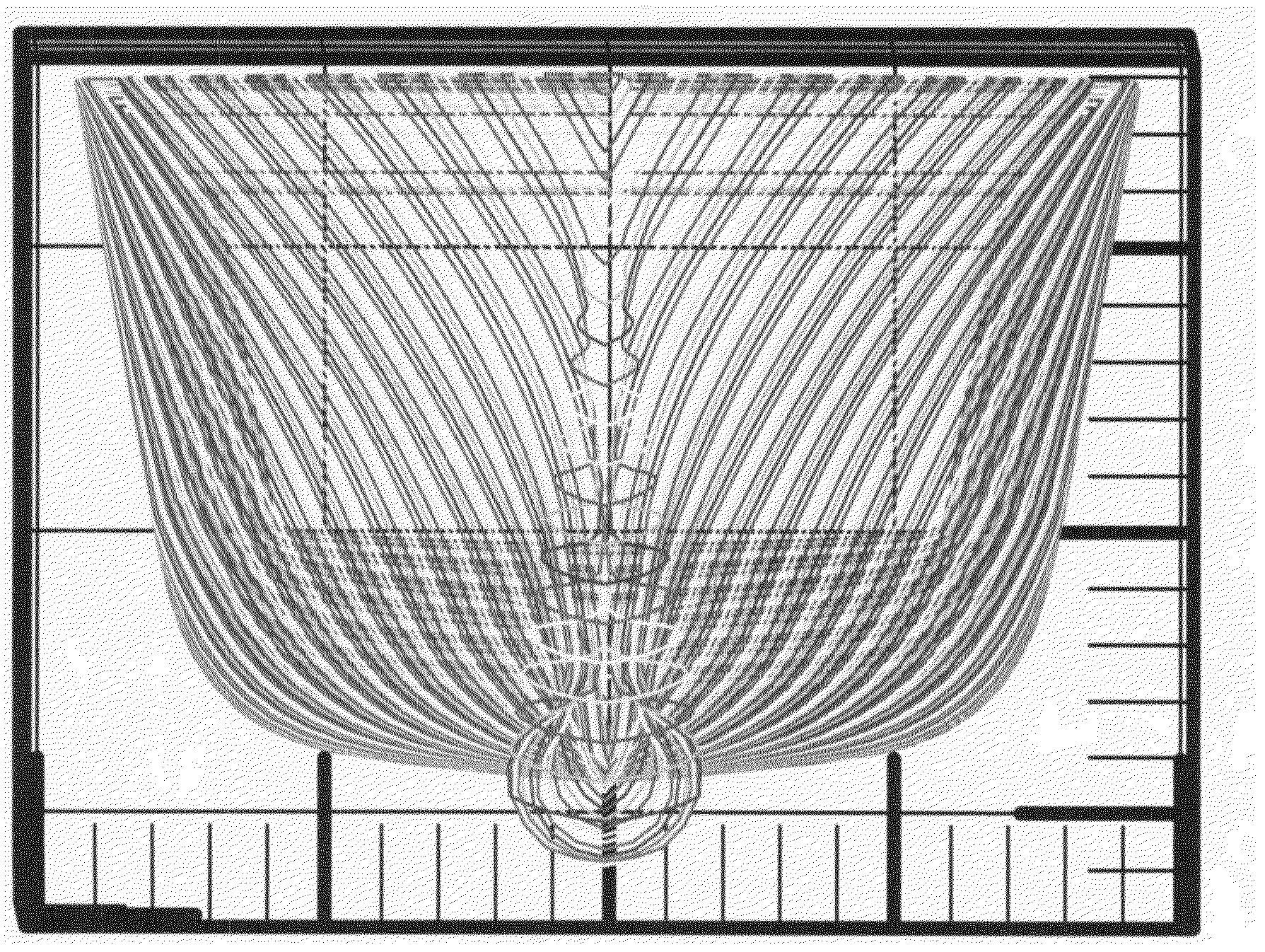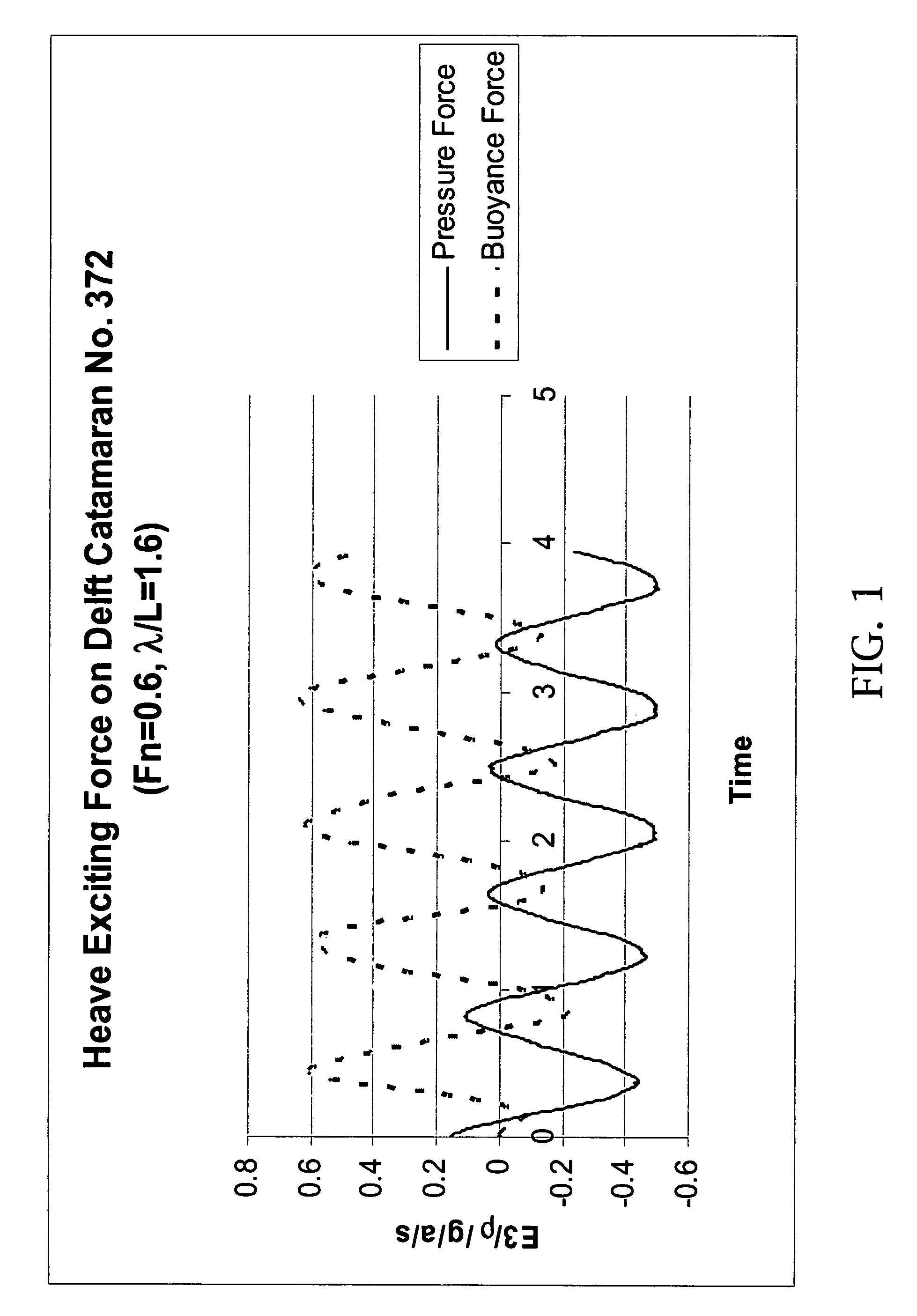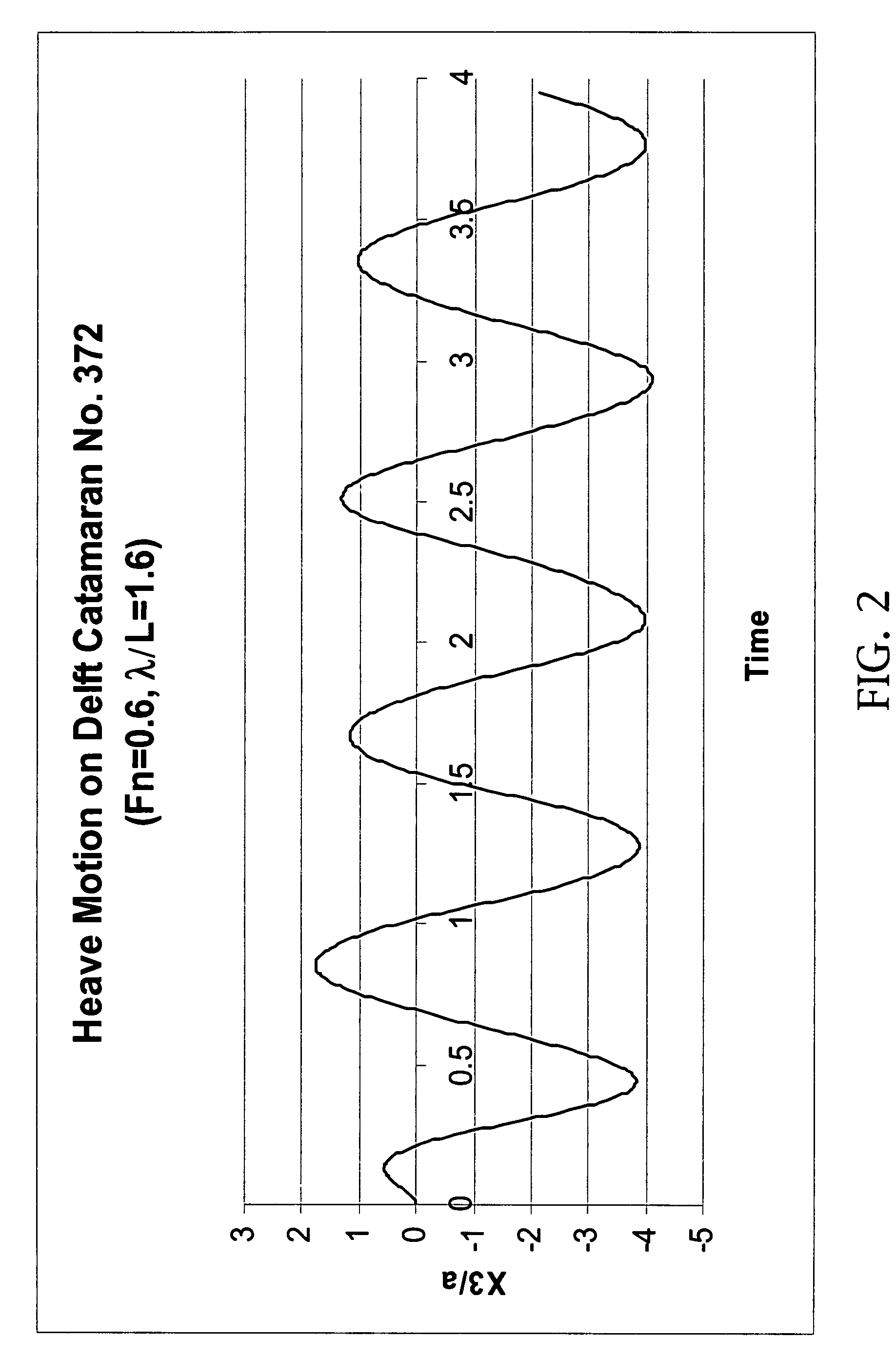Numerical modeling of six-degree-freedom ship motion
a technology of free movement and numerical modeling, applied in the field of marine vessel motion, can solve the problems of inability to model any nonlinear process, inability to implement computationally, and inability to model linear processes
- Summary
- Abstract
- Description
- Claims
- Application Information
AI Technical Summary
Benefits of technology
Problems solved by technology
Method used
Image
Examples
example
[0113]Roll motion is one of the most important ship responses to waves, and is very difficult to predict due to the complexity of ship-wave interaction and the sensitivity thereof to ship bilge keels and appendages. This sensitivity needs special attention, both in modeling corresponding physical processes and in numerical treatment. One important process in this regard is the roll damping. Without an appropriate roll damping model, accurate prediction of ship roll motion is inconceivable.
[0114]There have been several theoretical and experimental attempts to model the roll damping in the past. G. H. Bryan (1900) was perhaps one of the first researchers to study the bilge keel's effect. Forty years later, R. W. L. Gawn (1940) made a significant contribution with his studies on roll damping in still water. Later, T. Hishida (1952, 1954, 1955) provided a theoretical model on the roll damping for ship hulls in simple oscillatory waves. M. Martin (1958), N. Tanaka (1957, 1958, 1959, 1961...
PUM
 Login to View More
Login to View More Abstract
Description
Claims
Application Information
 Login to View More
Login to View More - R&D
- Intellectual Property
- Life Sciences
- Materials
- Tech Scout
- Unparalleled Data Quality
- Higher Quality Content
- 60% Fewer Hallucinations
Browse by: Latest US Patents, China's latest patents, Technical Efficacy Thesaurus, Application Domain, Technology Topic, Popular Technical Reports.
© 2025 PatSnap. All rights reserved.Legal|Privacy policy|Modern Slavery Act Transparency Statement|Sitemap|About US| Contact US: help@patsnap.com



